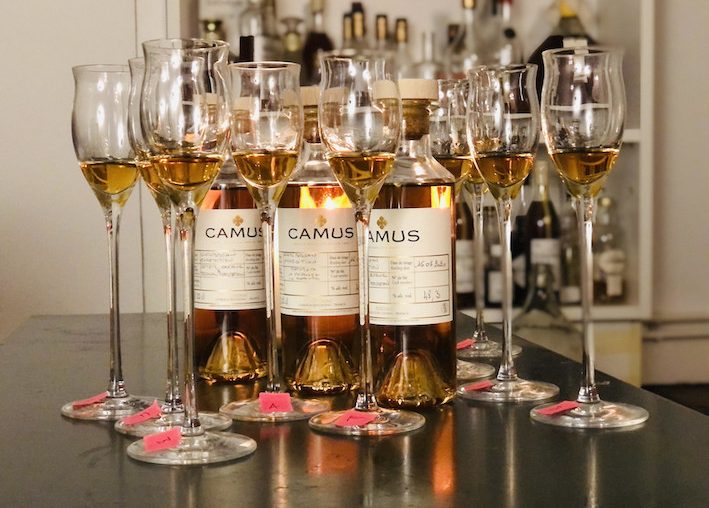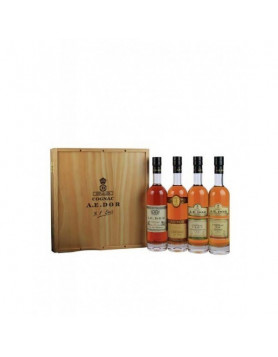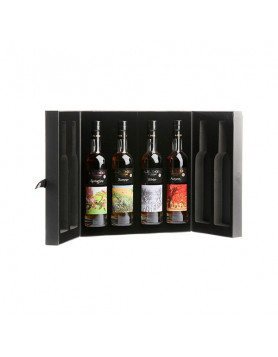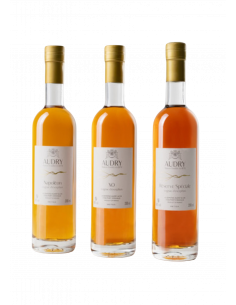It’s always a privilege to be able to taste a new Cognac. So when Camus offered their brand new limited edition to sample we jumped at the chance. The blend is a first-of-a-kind offering, named the Camus Caribbean Expedition Cognac.
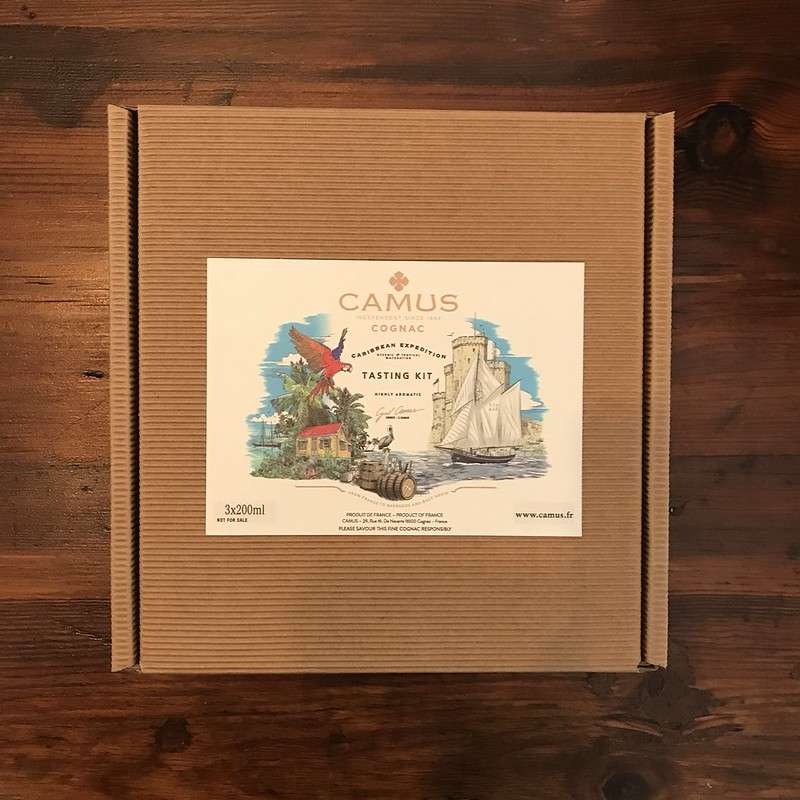
This is an exciting new addition to the world of Cognac, with the eau-de-vie undergoing a unique double maturation process. The barrels of Cognac deemed for the blend were duly aged for 4 years in the cellars of Camus. They were then loaded onto a tall ship for the 45-day journey to the tropical shores of Barbados. Here they were entrusted to the Foursquare master rum distiller, Richard Seale, to be aged for a further year. Read more about how the new Cognac came to be in our article Camus Caribbean.
I have to say, Camus excelled themselves with the tasting opportunity afforded to Cognac Expert. Not only did they give us a bottle of Camus Caribbean, but they also provided a bottle of the Cognac from the barrel before it was shipped to Barbados, and another that had been aged for a further year, but in their own cellars in Cognac.
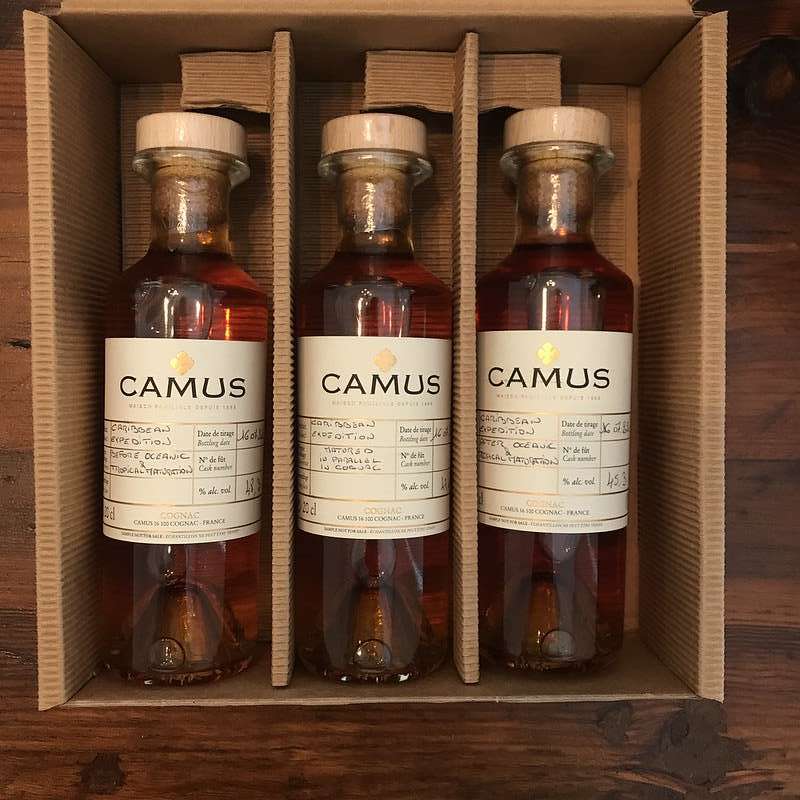
Let’s define how we talk about each in this discovery tasting set:
Cognac #1. As it was before it left France, without having undergone the double-maturation process
Cognac #2. The Camus Caribbean Expedition Cognac
Cognac #3. The one that was concurrently aged in Camus’ own cellars
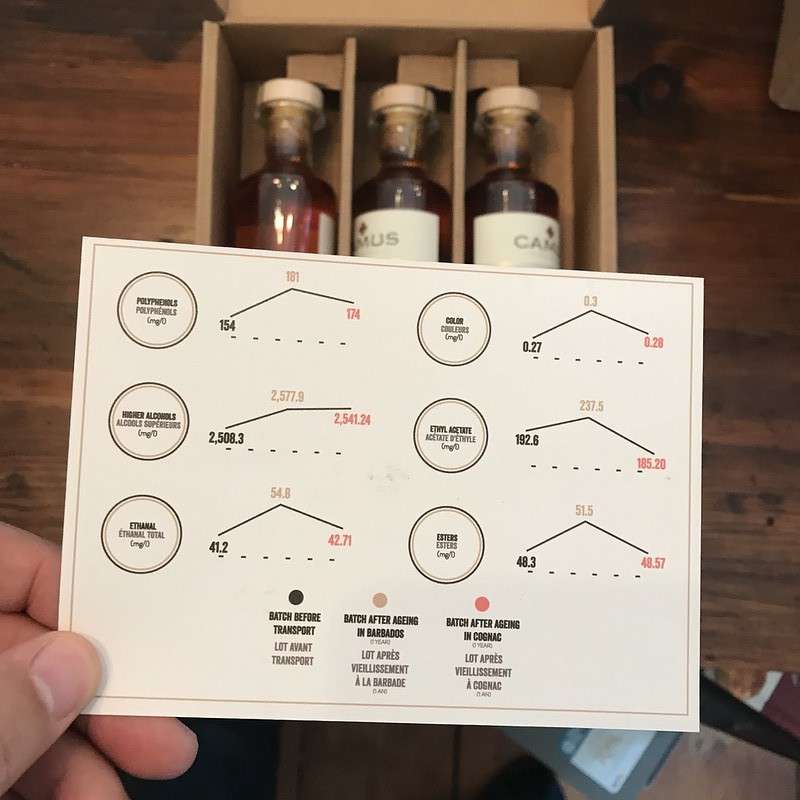
I didn’t want this to just be about my experience, so I invited two Cognac-loving friends to sample the three Cognacs with me. We tasted all of them together, and we had some differing opinions that I’ll explain as we go on.
Max and Friends Tasting Notes
Well, this is very interesting. Not only do Camus give us the Caribbean Expedition to taste, but two additional samples to compare it with. The first is the Cognac before it underwent oceanic and tropical maturation. The second is the actual Camus Caribbean Expedition, and the third that was matured in parallel in the cellars of Camus in Cognac. It’s a great to be able to do a comparison between the three.
Of course, the Camus Caribbean Expedition was then subjected to a further year’s aging on the tropical shores of Barbados. This does makes it a never-before-seen Cognac, and one that I’m really keen to try. Let me try and explain a little why this double maturation process might make a Cognac taste different.
- Because the sea journey makes the liquid wash around the barrel as it goes up and down on the waves. This alters the aging process because more of the Cognac is in contact with the wood as it swishes around the barrel.
- The air pressure changes at sea more than it does on land. This causes the wood of the barrel to contract and expand, so drawing in more air and, perhaps, accelerating the chemical process of aging.
- The temperature and humidity in Barbados is very different to that of the Charente. It’s a lot warmer, for a start. This has a massive effect on how the wood of the barrel imbues its qualities into the liquid it holds, creating a very different taste profile.
Our tasting discovery
This is what we thought when tasting the three different Cognacs.
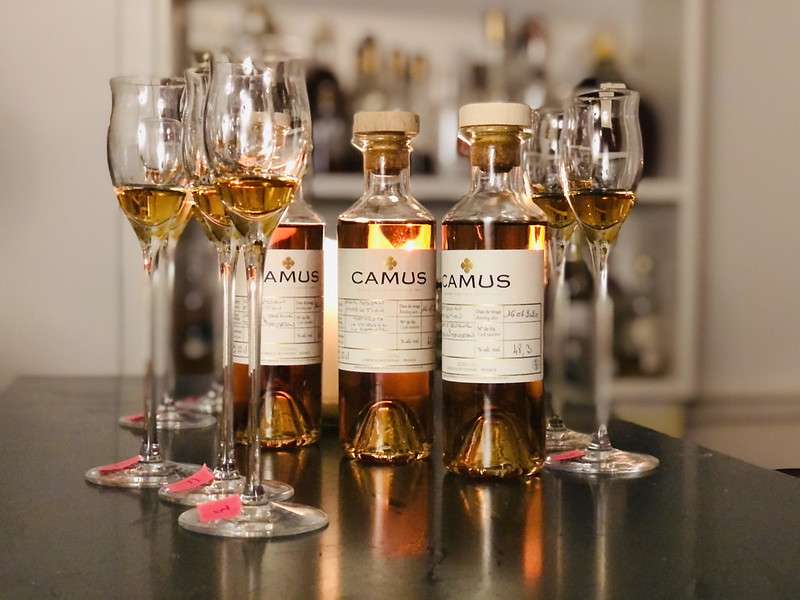
First of all I’d like to discuss presentation. In other words, the bottle. I really like it—smart yet simple. It’s a large, montre-style bottle, and by that I’m describing its shape. A montre is the name for a the small bottle used for Cognac sampling. It works really well in a larger format for this expression.
The Carribean Expedition label is great—it presents a kind of pirate theme, with the traditional port town of La Rochelle on the right, and that of balmy tropical shores on the left. I like the parrot and pelican as well. It’s a simplistic design but one that communicates there’s an adventure ahead.

OK, so onto the Cognacs.
The first thing I have to say is that Cognac #1 is very different from the other two. Of course, it’s not aged for as long. This has spent four years in Camus’ cellars, so it’s a VSOP. The other two have had at least another year to mature in the barrel. Bottle one is also much higher in alcohol, at 48.3% ABV. Again, this is explained by its youth.
Interestingly, the Camus Caribbean has the lowest ABV of the three, at 45.3% ABV. The one aged in Cognac comes in at 47.4%.
Cognac #1 is much more present in the nose than the other two, more punchy. You can smell the ethanol. It’s got more of a Cognac aroma.
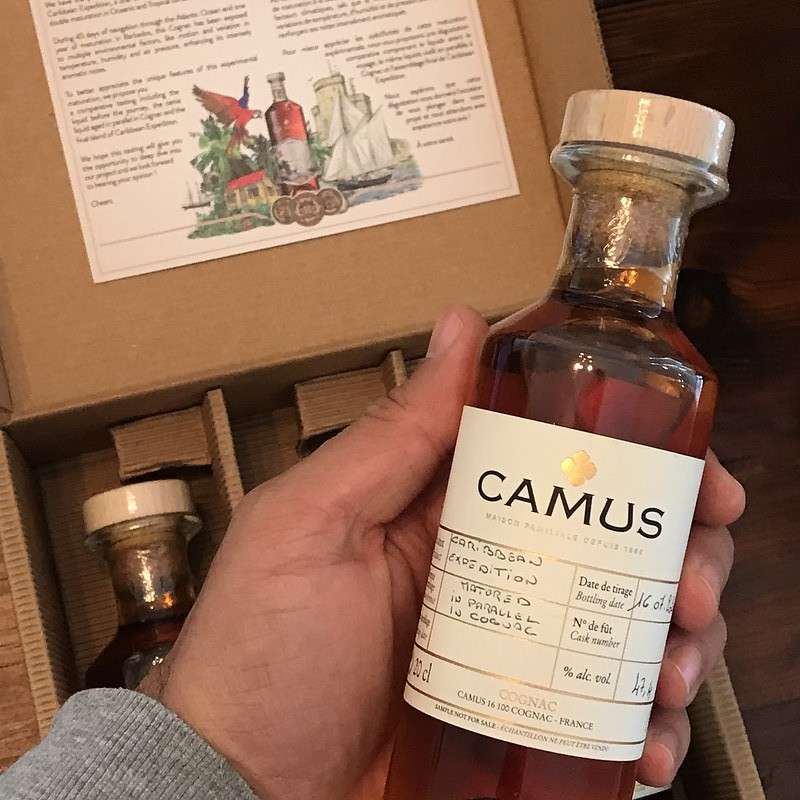
Cognac #2 is much less intense, as is Cognac #3. Moving onto the palate, the second two are, as you would expect from further aging, far rounder, less intense, and smoother than Cognac #1. Actually, I prefer the nose of Cognac #1, but the palate, finish, and overall expression of Cognac #2, the Caribbean Expedition.
My friends, however, preferred Cognac #1 overall. They didn’t prefer the nose, as they thought this was a little rough, but they did like it’s attack and aftertaste more. Both of them enjoyed the fire of the original blend, rather than the smoother taste sensation of the finished product.
Camus Caribbean Expedition vs. the Cognac-aged version
Despite being less punchy than Cognac #1, this still has a solid attack on the palate. But it’s much rounder, more mellow—but not too mellow, if you know what I mean. If I was being highly critical I’d say that I wish the nose was a little more present. But I do get some fruity aromas that definitely weren’t noticed with Cognac #1.
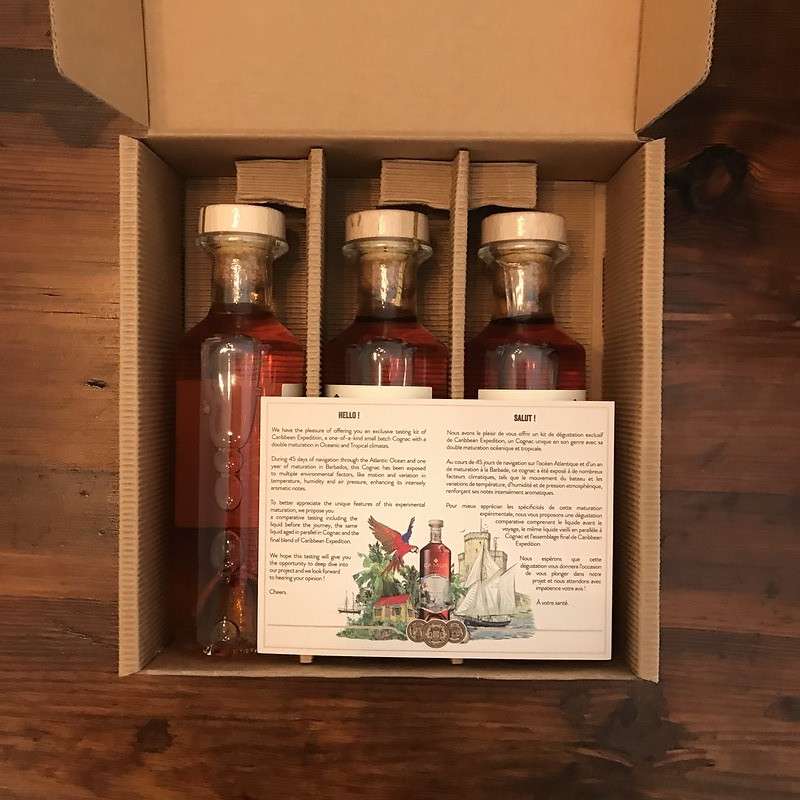
When it comes to Cognac #3, the Cognac-aged version, it’s slightly more spicy and a little less fruity. The tropical climate has definitely influenced Cognac #2 in that manner.
I generally agree with what Camus say about the Cognac, with a few exceptions.
Colour: Consistent amber with golden highlights. Yes, I agree with this.
Nose: Intense primary aromas of banana and pear. Spicy accents of cocoa bean and nutmeg, anticipating the typical rancio notes. I didn’t notice banana. But I could definitely taste pear. The rancio? Well, not so much.
Palate: Explosive attack, followed by roundness and elegance. Aromatic depth, with notes of exotic fruits accompanied by soft tannins. I agree with this.
We don’t know the cru of the Cognac, so will assume that its not pure Grande Champagne. Of course, tasting is subjective, so others may well be able to taste banana and notice rancio more than I can. That’s what makes tasting Cognac with friends such a fun process.
In Summary
Cognac #1 is far too sharp on the palate for me, but I liked the nose of this one the best. All three of us gave the same overall rating for both Cognac #2 and Cognac #3 (the Caribbean-aged and the Cognac-aged), but the Caribbean one is rounder, with a more fruity and woody taste. I’d really like to know more about the barrels used in the Barbados. Were they old or young?
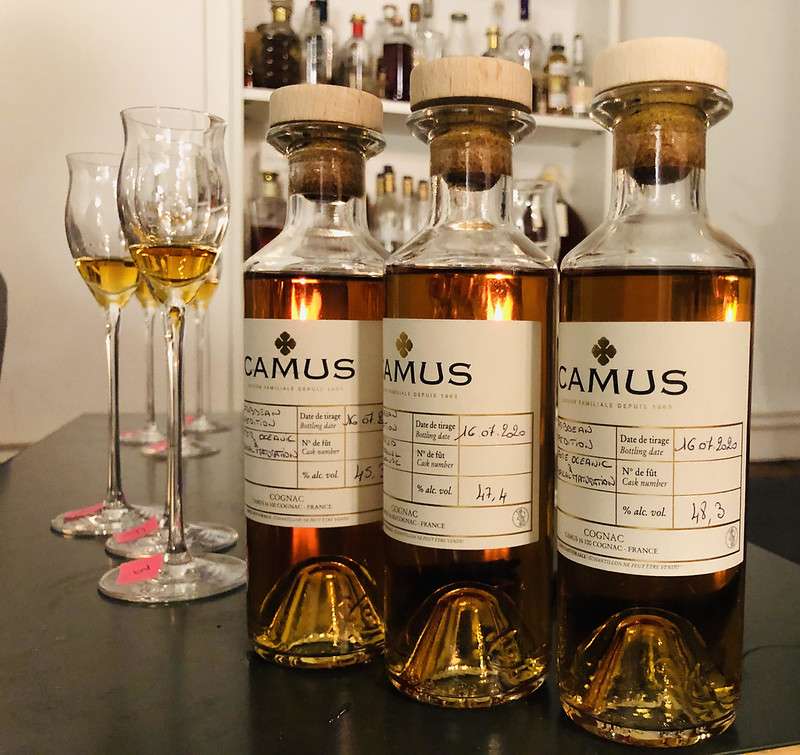
All three of us think that the price of the bottle is good value, especially when you consider how unique it is, the quality of the presentation, and that it’s a limited edition.. In fact, my two friends estimated it at between 180-250 Euros/Dollars. It actually comes in at 110—definitely worth the money.
My closing thoughts are that this is definitely a Cognac to try. The Camus Carribean Expedition offers a different taste profile, making it an exciting new product. Camus are way ahead of the other big brands when it comes to innovation. As well as the Caribbean Expedition, Camus have the Ile de Re range, that includes their XO Ile de Re Fine Island, the non-age statement, the Napoleon Double Matured, and the XO Cliffside Cellar. These are uniquely aged in ocean-fronting cellars on the Ile de Re, once again showcasing how a different environment can shape the aging process and therefore the finished product.
I’d also like to mention that there has been a similar experiment in the past. This was carried out by Kelt Cognac, who sent some barrels on a three month ocean journey as part of the maturation process. They created a range called the Tour du Monde, and subsequently released both a VSOP and an XO.
When it comes to innovation, Camus are leaders in challenging the status quo of Cognac and bringing inspired new products to market. Other examples include the Camus Port Cask Finish, the Extra Dark and Intense, and the Camus Saint-Aulay Special Finish, from the Dordogne. This is no mean feat when it comes to making sure you adhere to all the complicated legal aspects involved.
Hats off to Camus. I can’t wait to see what they bring us next.

